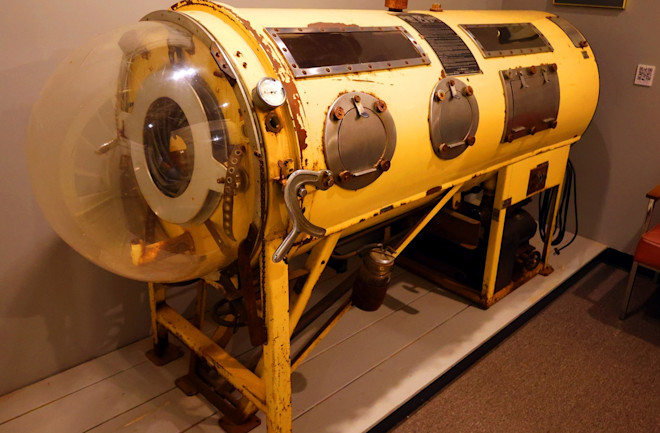In medical and engineering circles, it’s known by a few different names: cabinet respirator, tank respirator, negative pressure ventilator and others.
But since its creation almost a century ago, this lifesaving device has been known almost universally by another name: the iron lung.
What Is an Iron Lung?
As intimidating as the name sounds — and as scary as the coffin-like device looked — the iron lung was a medical miracle for people suffering from something even scarier: poliomyelitis. Before the polio vaccine was invented in 1955, the virus could be a death sentence, and periodic epidemics filled people around the world with a dread that’s hard to imagine today, even in a post-COVID world.

